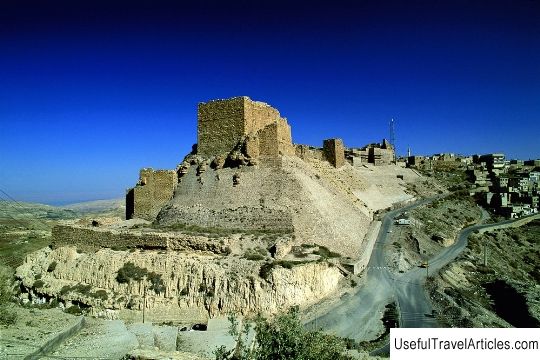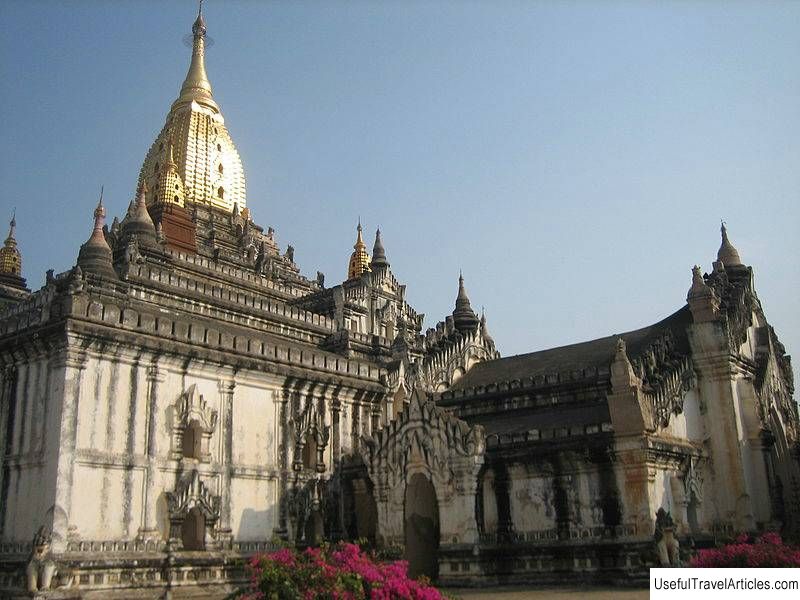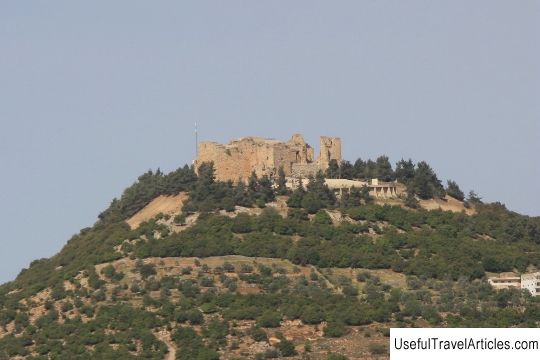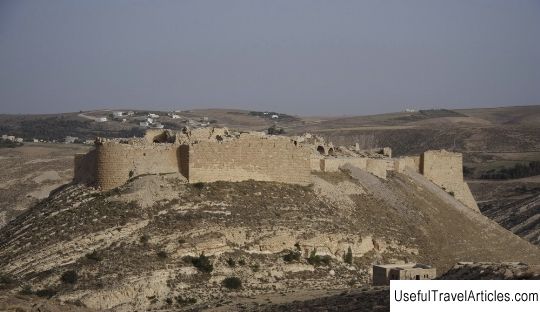Fortress Al-Karak (Karak castle) description and photos - Jordan
Rating: 8,1/10 (2321 votes) 
Karak castle description and photos - Jordan. Detailed information about the attraction. Description, photographs and a map showing the nearest significant objects. The name in English is Karak castle. Photo and descriptionKarak, one of the bastions of the Crusaders, is located 900 meters above sea level within the walls of the old city. Today its population is about 170 thousand people. It attracts tourists with a large number of well-preserved 19th century Ottoman buildings, restaurants and excellent infrastructure. But its most important attraction is, of course, the Karak Castle. The city is built on a triangular plateau, at the narrow southern end of which the castle is located. The castle is 220 m long, 125 m wide in the northern part and 40 m in the southern part, where a narrow gorge, turned into a wide ditch, separates its neighboring, higher hill - Saladin's once favorite firing position. Looking at the walls it is easy to spot among the dark rough masonry of the Crusaders meticulously crafted blocks of light limestone, the work of Arab builders. Several centuries later, the Crusaders spent about twenty years building their massive castle. After the completion of construction in 1161, it became the residence of the ruler of Transjordan, which at that time was considered the most important feudal possession of the Crusader state, which provided them with agricultural products and paid taxes. Having withstood several sieges in the early 1170s, Carac was captured by Reynald de Chatillon, a ruler known for his recklessness and barbaric behavior. Violating all treaties, he began to plunder trade caravans and pilgrims going to Mecca, attacked the cradle of Islam - the Hijaz, raided Arab ports on the Red Sea, and even threatened to seize Mecca itself. Saladin, ruler of Syria and Egypt, reacted promptly. He captured the city of Karak by force, burned it to the ground, and even nearly took the castle itself. Reynald's peacetime attack on a large caravan in 1177 resulted in a swift retribution from Saladin, who declared the Crusader state a war that ended in the defeat of the Crusader troops at the Battle of Hattin. Saladin freed almost all the captured, except for Reynald, whom he personally executed. The defenders of Karak withstood almost eight months of a prolonged siege, and then surrendered to the Muslims, who generously let them go on all four sides. Once again in the hands of Muslims, Karak became the capital of the region covering most of modern Jordan. and for the next two centuries played a key role in the political life of the Middle East. For a time, Karak was even the capital of the entire Mamluk state, when Sultan al-Nasir Ahmad was tired of endless battles in the struggle for power in Cairo. Indeed, his brother and heir, al-Salih Ismail, had to undertake eight sieges before he was able to capture the fortress and regain the royal regalia. It was during these sieges that Karak was honored with the dubious honor of becoming the main target for the most modern artillery in those days in the Middle East: al-Salih Ismail used cannons and gunpowder to assault. During the reign of the Ayyubids and the first Mamluk sultans, the castle underwent significant rebuilding, and the city fortifications were reinforced with massive towers, which apparently did not have a gate: the way to the city lay through underground passages, the entrances to which are still visible. In later times, the city now and then became a refuge for rebels, and the castle was used as a venue for tribal councils. Since 1894, after the establishment of a firm Turkish rule, the Mamluk palace inside the fortress was turned into a prison. The great Arab uprising dealt the final blow to Turkish rule, which ended in 1918.         We also recommend reading Bastion Martinengo description and photos - North Cyprus: Famagusta Topic: Fortress Al-Karak (Karak castle) description and photos - Jordan. |




